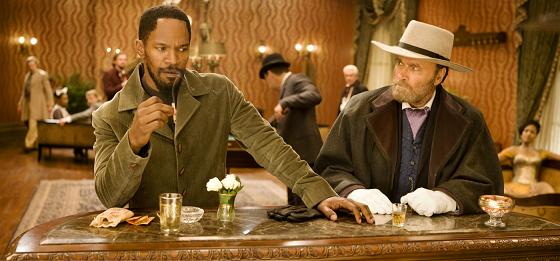
 |
| Photo © 2012 The Weinstein Company/Columbia Pictures |
| Academy Award Nominations and Winners: | |
| Best Picture | |
| ★ | Best Supporting Actor: Christoph Waltz |
| ★ | Best Original Screenplay: Quentin Tarantino |
| Best Cinematography: Robert Richardson | |
| Best Sound Effects Editing: Wylie Stateman | |
| Golden Globe Nominations and Winners: | |
| Best Picture (Drama) | |
| Best Director: Quentin Tarantino | |
| Best Supporting Actor: Leonardo DiCaprio | |
| ★ | Best Supporting Actor: Christoph Waltz |
| ★ | Best Screenplay: Quentin Tarantino |
| Other Awards: | |
| National Board of Review: Best Supporting Actor (DiCaprio) | |
| Permalink | Home | 2012 | ABC | Blog |